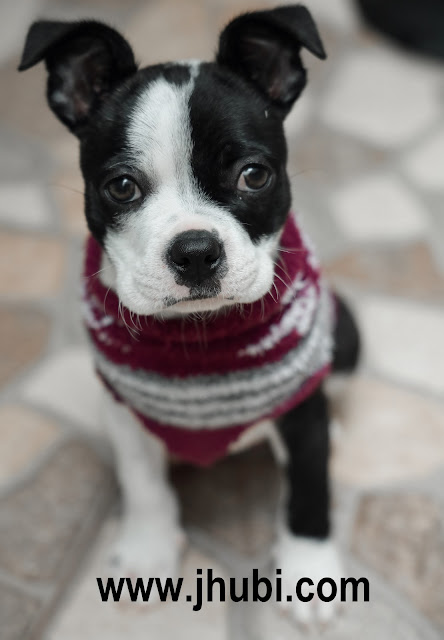The Puppy's Coat: An Array of Individual Hairs
Fur: The Essential Protective Barrier
Fur serves as a crucial shield for a puppy, safeguarding its skin from the elements and playing a significant role in regulating body temperature. Additionally, it acts as a medium for diffusing scent chemicals, aiding in identification and communication through scents.
Varied Fur Types Among Dogs
While all healthy dogs have fur, the amount and type of fur can vary significantly, not only between breeds but also among individual dogs. Even seemingly hairless breeds, like the Chinese Crested, possess a thin coat of hair on certain areas of their bodies.
Hair: Composition and Growth
Hair is made up of two main components - the hair shaft, the visible part of the hair, and the root, generated by a hair follicle in the skin. Unlike humans, dogs have compound follicles, allowing multiple hairs to grow from a single pore.
Understanding Different Types of Dog Hair
Dogs exhibit two main types of hair - guard hairs, which are long and coarse, forming the outer coat, and secondary hairs, the soft and short hairs that create the undercoat. Interestingly, all hair types can sprout from one composite follicle, contributing to the diversity of coat types among breeds.
The Fur Growth Cycle
The growth of fur follows a predictable cycle, involving the anagen phase (active hair growth), the catagen phase (hair root detachment), and the telogen phase (rest period). Shedding is a natural process in which old telogen hairs are replaced by new ones.
Shedding Patterns and Breed Variability
Dogs' hair growth cycles differ from that of humans, resulting in shorter and more synchronized cycles. Some breeds experience massive seasonal shedding, while others, like "non-shedding" breeds (e.g., poodles and some terriers), have a single-layer coat where hairs grow for several years before replacement.
The Role of Nutrition for a Healthy Coat
A healthy and vibrant coat relies on good nutrition and overall health. Proper nutrition ensures the right balance of skin oils, contributing to the coat's shine. Conversely, poor nutrition may lead to a dry, lifeless coat or abnormal hair loss, signaling underlying health issues.
Puppy Whiskers: Vital Sensory Tools
Puppy whiskers, also known as vibrissae or sinus hairs, serve as crucial sensory tools for dogs, offering tactile input from their environment.
Development and Function of Whiskers
Whiskers, made of thick, long, and wiry hairs, protrude from a dog's face and act as feelers, activated by even the slightest touch. They play a vital role in helping dogs navigate their surroundings.
Strategic Locations of Whiskers on Dogs
Positioned strategically on the dog's face, whiskers are found above the eyes, on the cheeks, around the mouth, and under the chin. Each location serves a specific purpose in providing sensitive sensory input.
The Versatile Role of Puppy Whiskers
Puppy whiskers aid dogs in various activities, such as tracking behavior, locating objects, maintaining head balance and orientation, and protecting them from surrounding objects. Due to their importance, whiskers should be handled with care and never trimmed.
How to Buy Puppy Coats?
- Search puppy Coat in google
- Click on any website
- Check product and its reviews
Also you can buy from here
Amazon: https://www.amazon.com
Alibaba: https://www.alibaba.com
Conclusion
In conclusion, a puppy's coat is a remarkable and intricate feature, comprising individual hairs that define the texture and color of each dog's unique fur. Fur serves as a protective shield, regulating body temperature and safeguarding puppies from various environmental challenges. Additionally, it plays a crucial role in scent communication, facilitating identification and signaling sexual status among dogs. Understanding the different types of dog hair and the fur growth cycle helps us appreciate the diverse coats seen among various breeds.
At Jhubi Pet Point, we aim to be your go-to destination for all pet-related information, helping you provide the best care and support for your furry companions. From understanding the intricacies of your pet's coat to offering guidance on various aspects of pet care, our platform is dedicated to promoting the well-being and happiness of your beloved pets.
FAQS
Q: Why do some dogs have a single-layer coat while others have a double-layer coat?
A: The type of coat a dog has depends on its breed. Dogs with double coats have an undercoat of soft, short hairs that help to insulate them from the cold, and an outer coat of longer, coarser hairs that protect them from the elements. Dogs with single coats only have an outer coat, which is usually shorter and less dense than a double coat.
Q: What are the different types of dog hair?
A: There are two main types of dog hair: guard hairs and secondary hairs. Guard hairs are the long, coarse hairs that make up the outer coat. Secondary hairs are the soft, short hairs that make up the undercoat. Some dogs also have a third type of hair called whiskers, which are long, thick hairs that protrude from the dog's face.
Q: How often do dogs shed?
A: The amount of shedding a dog does depends on its breed and the time of year. Dogs with double coats tend to shed more than dogs with single coats. Some dogs shed seasonally, while others shed all year round.
Q: What should I do if my dog's coat is not healthy?
A: If your dog's coat is not healthy, you should take it to the vet to rule out any underlying medical conditions. Once any medical problems have been addressed, you can work with your vet to develop a plan to improve your dog's coat health.





0 Comments